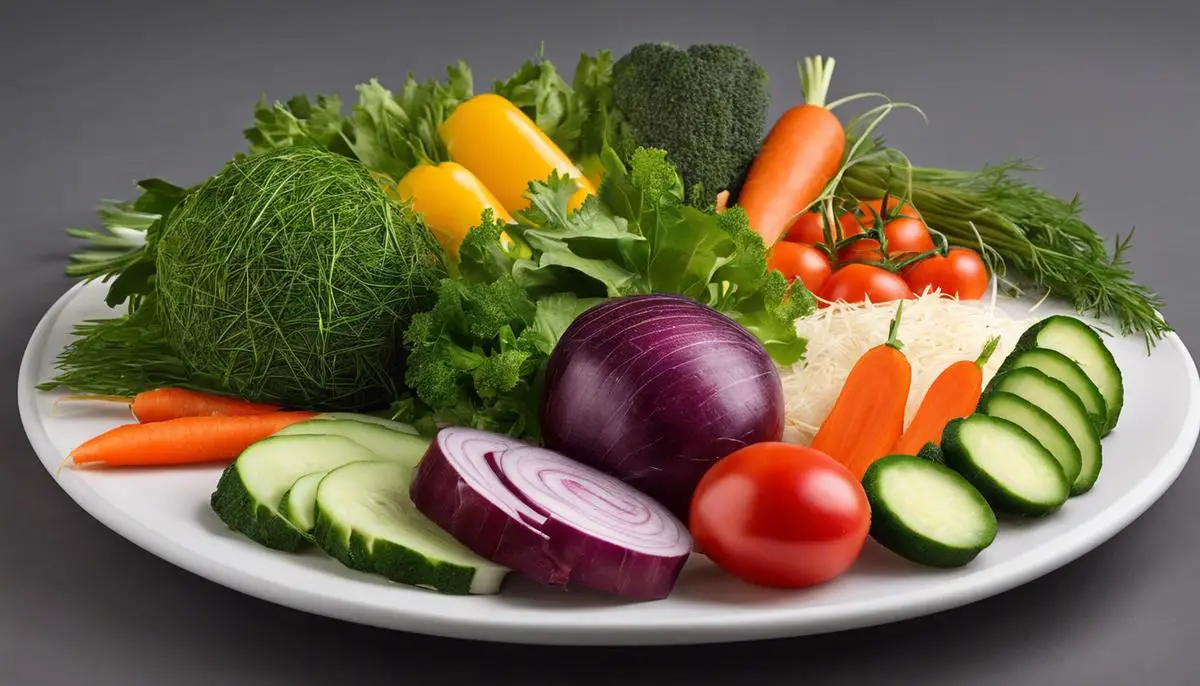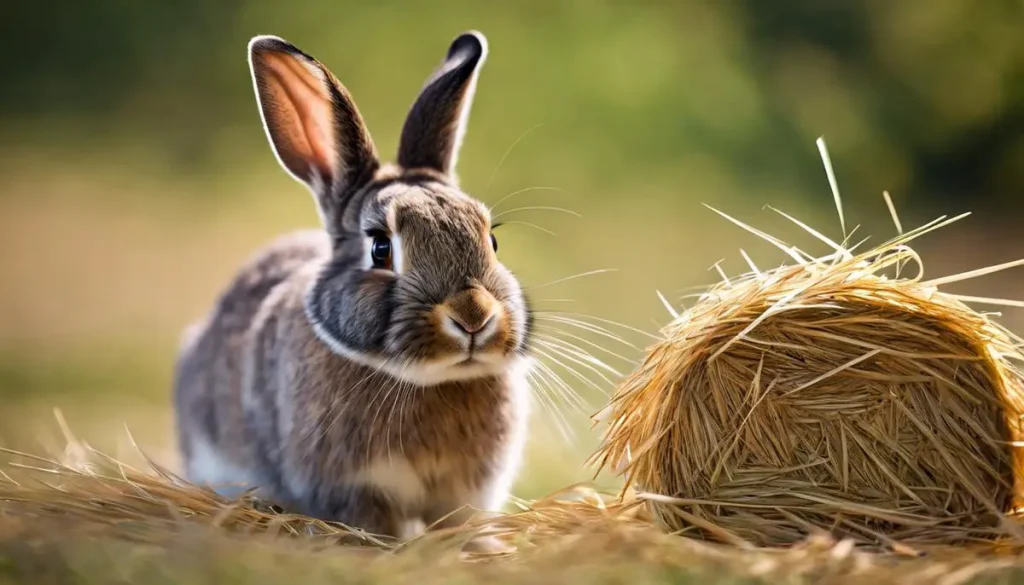Rabbits are delightful companions with specific nutritional needs that must be catered to with great care to ensure their health and well-being. A rabbit’s diet is a delicate balance, central to which is fiber-rich hay, accounting for the majority of their daily consumption. Vegetables and fruits, including the commonly debated radish, play a significant yet supplemental role in providing diversity and essential nutrients. This essay will explore the place of radishes within a rabbit’s diet, examining their nutritional benefits, potential risks, and how they can be safely introduced to our furry friends’ meal plans. As we hop into the details, we’ll discover how these crunchy vegetables can contribute to a rabbit’s health when served in moderation and what other wholesome treats can accompany them at the dining table.
Rabbits’ Dietary Needs
Hopping Towards Health: Crafting the Perfect Diet for Your Bunny Pal
Bunnies, with their soft fur and twitching noses, aren’t just adorable; they’re companions that bring a unique joy to any family dynamic. When it comes to feeding these furry friends, understanding the staples of a balanced diet will ensure they’re hopping happily for years to come. Primarily, a bunny’s diet should consist of high-quality hay, fresh vegetables, and a smidgen of fruits and pellets for a nutritional round-up.
First and foremost, hay is the cornerstone of a bunny’s diet. It’s not just for snacking; hay provides essential fiber which aids in digestion and helps prevent obesity and dental diseases. Timothy, oat, and meadow hay are excellent choices that should be available to your bunny at all times. Remember, a bunny munching on hay is a sound as comforting as leaves rustling in a gentle breeze—it’s the sound of health!
In addition to hay, a bunny requires a diverse assortment of veggies for vital nutrients. Leafy greens like romaine lettuce, bok choy, and arugula should feature prominently in their diet, but it’s crucial to introduce new veggies slowly to avoid upsetting their delicate digestive systems. A little variety—think bell peppers, zucchini, and herbs—can provide a bouquet of flavors and vitamins to keep mealtime exciting. As for fruits and pellets, think of them as the sprinkles on a cake; they’re treats that should be given sparingly. Pellets should be high in fiber and low in protein, while fruits like apples or berries are perfect for an occasional treat—just ensure they’re free of seeds and pips!
Crafting a balanced diet for a pet bunny is an act of love, mirroring the care and attention that goes into nurturing a family. It’s by providing these fundamental nutritional building blocks that we watch our long-eared companions thrive, bringing a hop, skip, and jump of joy into our homes. With just a bit of knowledge and care, those beloved bunnies will be both happy and healthy, ensuring years of joyful companionship and fluffy cuddles.

Health Benefits and Risks of Radishes for Rabbits
When thinking about expanding a bunny’s diet with nutritious additions, radishes often spring up as a curious option. Hopping into the details, radishes do indeed fall into the category of safe treats for rabbits, but just like any good thing, they must be offered in moderation. Chock-full of vitamins and minerals, radishes can add a little zing to a rabbit’s mealtime with their peppery flavor, making them an exceptional choice for the occasional treat.
However, there’s a bit of a rooty catch. The spicy kick from a radish that some humans love can sometimes be a turn-off for our furry friends, so it’s best to first offer a tiny taste to see how they react. And when we talk about moderation, we mean it – too many radishes can lead to an upset tummy, disrupting our rabbit’s digestive system, which we know from their hay-centric diet is very delicate. A thin slice or two of radish once or twice a week is more than enough for a rabbit to enjoy these crunchy treats without any dietary backflips.
Furthermore, it’s vital to remember that while the radish bulb is safe, the leafy greens on top are a real bunny banquet. Rich in calcium and packed with nutrients, radish tops are less spicy and more likely to be a hit with the hoppy crowd. They also have a high water content, which is great for hydration but again, remember the key is small amounts to keep that bunny belly serene and satisfied. When it comes to feeding pet rabbits right, it’s all about diversified vicissitudes with a keen eye on quantity and reactions. With a well-considered approach to treats like radishes, a rabbit’s diet can be both interesting and healthful.

Proper Serving Size and Frequency
When considering a crunchy treat for those adorable bunny companions, radishes may come to mind. It’s true, these root vegetables can be a tasty nibble for rabbits, but moderation is key. Think of radishes as the occasional indulgence rather than a staple in their diet. They are more like a delectable piece of candy for us—fine in small doses but not something to overdo.
While radishes themselves are usually safe in limited amounts, it’s the radish tops that really shine in terms of rabbit nutrition. Rich in water content, these leafy greens can aid in keeping rabbits hydrated and provide some variety in texture and flavor. However, there’s a twist— not every bunny might take to the zesty taste. Always start with a tiny bit to see how they react, and keep an eye on them for any signs of digestive discomfort. When it comes to serving size, a small slice of radish or a couple of radish leaves per serving should suffice.
Let’s remember that all treats, radishes included, should never overshadow the core components of a rabbit’s diet: high-quality hay, fresh vegetables, and water. And regarding those crunchy radish treats, think of them as a once-in-a-while delight, perhaps once or twice a week at most. After all, the goal is always a flourishing, well-nourished pet that hops happily for years to come.

Alternative Rabbit-Friendly Snacks
As we hop further down the rabbit hole of diet and treats for our furry friends, it’s fun to discover more goodies that can be added to their menu. While balancing their diets is akin to a fine art, certain flowers can be safe and delightful treats. Marigolds, for example, might brighten up a salad for you and yet are perfectly safe for bunnies as a tasty nibble – in moderation, of course. Similarly, hibiscus flowers, when dried, can be a fragrant treat that adds a bit of tropical zest to a rabbit’s diet.
Leafy greens are the bread and butter of any rabbit’s diet, but did you know that borage leaves can also join the party? These leaves are not only safe but are also known for their high levels of Omega-6 fatty acid, which can promote a healthy coat. It’s important to note that like any new addition, it should be introduced slowly and in small amounts. Rose petals, yet another delightful snack, are safe for rabbit consumption and can provide some variety, ensuring that the concept of ‘salad days’ takes on a whole new meaning in a rabbit-rich household.
Now, with all these fresh treats mentioned, there’s one unexpected class of snacks that might have been overlooked: certain types of seaweed. Yep, you read that right! Dried seaweed, particularly nori, can be an occasional treat due to its minerals and vitamins. But remember, moderation is key as seaweed is salty, and too much salt is a no-go for bunny tummies. Always ensure these snacks are unsalted and free from spicy seasoning.
Incorporating these unique treats not only brings happiness to your hoppy companions, but it also allows for variety in texture and flavor, stimulating their senses and making mealtime an exciting adventure. So, go ahead, let those bunnies nibble on a petal or a leaf here and there – just keep an eye out for portion sizes and reactions. It’s all about cultivating joy and health for these lovable little fluffballs.

Understanding the intricacies of a rabbit’s dietary requirements is fundamental to ensuring their longevity and vitality. From the humble radish, with its crisp texture and nutritional value, to a smorgasbord of rabbit-approved veggies and fruits, we’ve dug deep into the earth of knowledge to harvest insights on what these lovable creatures can safely nibble on. Offering a variety of appropriate snacks in the right portions will not only satisfy a rabbit’s palate but also support their overall health. Armed with this information, rabbit guardians can feel confident in their ability to provide a diet that reflects both care and knowledge, contributing to the happiness and well-being of their cherished pets.



